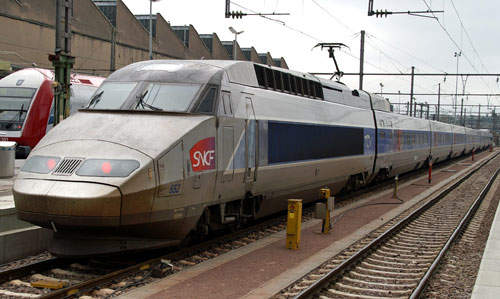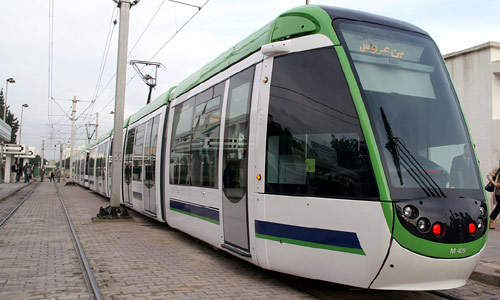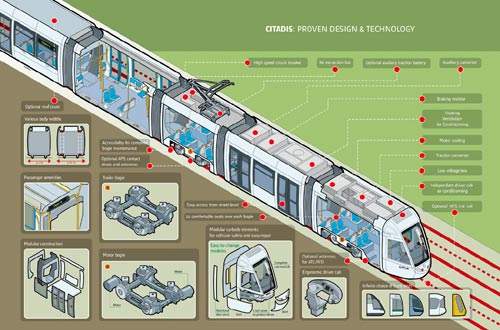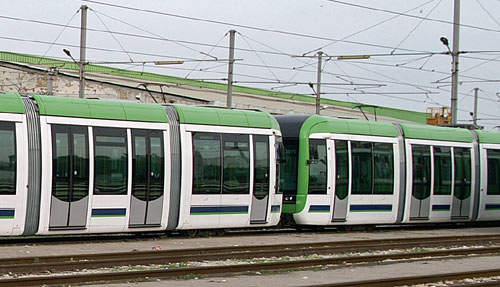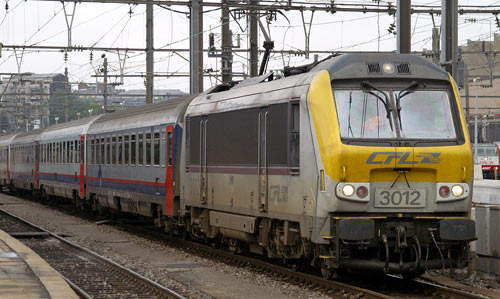The North African Kingdom of Morocco is set for radical additions to its rail infrastructure, following contract announcements in 2007. The country is to create its first modern light rail system and is to become the location of the continent’s first high-speed line.
Ceasing to be a French protectorate in 1956, Morocco rates fifth among African national economies and is a trading partner with the US and the EU. Its principal industry, phosphate mining, is of great importance to the country’s railway system. Tourism is well established and in recent years the country has become the target of low-cost airline carriers based in northern Europe.
The project
The state operator of trains and rail infrastructure for the 1,907km, 1,435mm gauge network is ONCFM (Office National des Chemins de Fer du Maroc). Passenger numbers have been experiencing at least 10% annual increases over recent years.
The project involves SNCF International, with the consultant for the high-speed developments being a consortium led by French company Systra’s Moroccan subsidiary, also including local engineering consultants CID, Team Maroc and ATPE.
Systra has also been a project consultant for the Rabat light rail scheme.
The multi-element contract covering rail and power supply was signed on 22 October 2007 during a visit to Morocco by the French President, Nicolas Sarkozy.
Following the multi-element contract, in April 2009 SNCF president Guillaume Pepy and Minister of Transport Karim Ghellab entered into two new contracts for provision of assistance and missions of expertise related to the project.
For Alstom, an established supplier of rolling stock to ONCFM and active in the country for 40 years, the contract represents a further strengthening of its already significant presence in the buoyant North African rail market.
Infrastructure
The new rail developments are initially all along the Atlantic seaboard, which contains the country’s main population centres. The high-speed line will cover the 308km (191 mile) distance from Tangier in the north to the country’s largest city and commercial centre, Casablanca. It will eventually cut the journey time to 2hr 10min from the present 5hr.
The $2.61bn contract is on a design, build, operate and maintain basis. Projected loadings are for 8 million passengers per year following the projected opening in 2013.
The first phase will be the 200km (125 mile) section between Tangier and Kenitra, which like the wider high-speed system allows for 320km/h (200mph) running. The high-speed lines will use 25kV ac electrification, unlike the 3KV dc supply on the conventional system.
The initial two 1,435mm light rail lines will total 19km, linking the capital Rabat and Salé, with 32 stations. They will also serve a new residential and leisure area by the Bou Regreg estuary being regenerated by a Dubai-based developer.
Road congestion has become a serious problem with 650,000 people travelling daily by road between the two cities. Indirectly the project may also help reduce a relatively high death rate among road users.
Rolling stock
The latest projects are another round in the continuing success of Alstom’s TGV high-speed trains and Citadis trams. The project tender covered delivery of 40 trams that will operate, like the Citadis sets for Tunis delivered from 2007, coupled in double 30m sets.
Morocco’s trams will be an integral part of the new light rail development, unlike Tunis where the Citadis has been introduced to a long-established network. There is an option for additional units and the stock will be subject to a five-year maintenance agreement.
The high-speed trains in the contract are 18 TGV high-density Duplex-type (double deck) sets. Alstom has also signed a €74m contract with ONCFM for 20 high-power Prima electric locomotives for delivery from 2010 with a two-year maintenance programme. They will be used across the Moroccan network for freight operations at up to 120km/h (75mph) and passenger services up to 160km/h (100mph).
Signalling and communications
Both the light rail and high-speed lines are part of packages that will include the respective signalling systems of the proven Citadis and TGV products.
Requiring no lineside signals on the dedicated high-speed tracks, the TGVs will require compatible systems when using the conventional network.
The future
The trams are due to start revenue service in 2010, followed in 2013 by the first part of the high-speed line. The Moroccan railway master plan projects a 1,500km high-speed operation for 2030–2035 with two lines, Tangier-Marrakech-Agadir (Atlantic Link) and Rabat-Fez-Oujda (Maghreb Link).
A long-term project overseen by a Moroccan-Spanish committee is a 40km rail tunnel beneath the Strait of Gibraltar, opening the prospect of TGVs or their successors travelling between Europe and Africa from 2025.

